Paul Levinson's Blog: Levinson at Large, page 171
December 31, 2018
The Orville 2.1: Relief and Romance
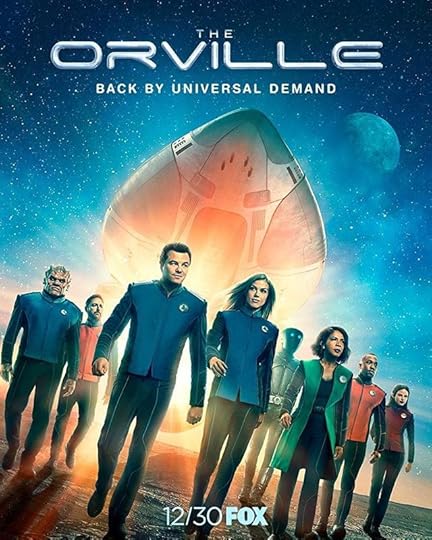
Coming in with a quick New Year's Eve review of The Orville, which launched its second season on Fox (just Fox, not Fox News) last night.
The Orville continues to be what is and was last season: a much welcome alter-version of Star Trek (TOS and TNJ) with the humor turned up. Episode 2.1 featured Bortus and crew preparing for their equivalent of Spock's Pon Farr on TOS. In Bortus's case, it's a once-a-year time to, ah, relieve oneself.
This in turn provides an occasion for all kinds of romantic quests and entanglements, as our crew hustles to find partners to attend the ceremony. Ed and Kelly are no longer partners - she's with a school teacher - and Malloy and Kitan (who were not together in the first place, as far as I can recall) each struggle to find suitable accompaniment for the ceremony.
Claire (Dr. Finn) is with Isaac, since the robot got her son out of hot water. I'm assuming that the most that can be expected here is a Platonic relationship. But, hey, in this alternate Star Trek, you never know.
My favorite Star Treks were and likely always will be TOS and TNG (cheapskate that I am, I don't feel like paying to see what's currently on CBS All Access), which means that The Orville would really have to work hard to not be of interest. As it is, I find it highly enjoyable, and think that in its own way it makes an important contribution to Star Trek lore. That, and it's good to laugh.
The Orville's regular time is Thursday nights. See you back here, then next year, and I'll try not to pun any more on "launch".
love across alternate realities
See also The Orville 1.1-1.5: Star Trek's Back ... The Orville 1.6-9: Masterful ... The Orville 1.10: Bring in the Clowns ... The Orville 1.11: Eating Yaphit ... The Orville 1.12: Faith in Reason and the Prime Directive
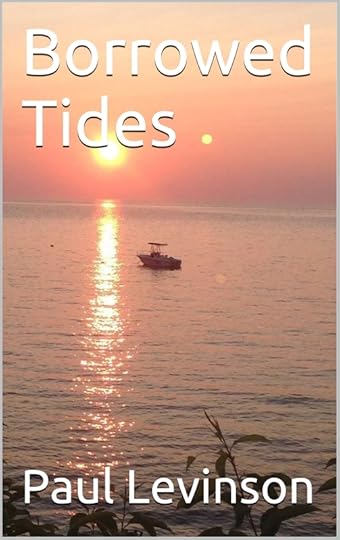
1st starship to Alpha Centauri ... had only enough fuel to get there
Paul Levinson's books ... Paul Levinson's music
Published on December 31, 2018 15:57
Counterpart 2.4: Three Emilys and Yanek
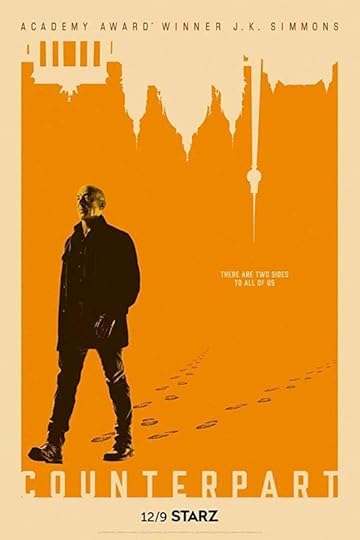
The best part of the excellent Counterpart 2.4 last night, I thought, were the two Emilys. Actually, three Emilys, which is what made this hour different and so revealing.
The third Emily is Emily as a little a girl, in 1984, before the split into two worlds. She has a nickname - Belinda, taken from the Go-Gos. The proves significant later on. When Emily Prime shows up at - I don't, at something between a resort and a bungalow colony - she's greeted as "Belinda" by the proprietor. She remembers the name, but apparently hasn't used it since she was a kid. This means that Emily Alpha, in one or more of her visits to the other side, came to this very place, and likely more than once, given how well the gent in charge seems to know her. This is confirmed when Alpha goes to the brick wall where she hid a ring behind a loose brick as a child, and finds something very different. Proof in hand that Alpha has been there. Lord of the Rings meets Counterpart.
This kind of in-depth presentation of before the split, and the two versions after the split, puts Counterpart in a more explicable light. Yanek the kindly shrink complements this process for us with his line of investigation - specifically, in this episode, making it clear that he wants to know why the two Howards turned out so different, which relates to exactly when the two Howards split and began to diverge. Yanek is in effect not only working for the other side, but for us in the audience, by pursuing exactly the line of inquiry which will give us answers to the most crucial questions.
That, in a nutshell, is why I think this season of Counterpart is better than the first, which I much enjoyed. But after we get over the shock and wonder of two different worlds in Germany, I like the puzzle solving - by the Emilys and Yanek - better than the murders.
Happy New Year, and see you here next week/year.
a song about love and alternate realities
See also: Counterpart 2.1: "Strange" and "Lucky" ... Counterpart 2.2: The Emilys ... Counterpart 2.3: Echo
And see also Counterpart 1.1: Fringe on Espionage ... Counterpart 1.2: Two Different Worlds ... Counterpart 1.3: Identification and Pandemic ... Counterpart 1.4: The Switch ... Counterpart 1.5: Ménage à Alternates ... Counterpart 1.6: Alternate Prince, Funeral, and Clear Clare ... Counterpart 1.7: Spying Across Dimensions ... Counterpart 1.8: Conversations ... Counterpart 2.9: The Spy Who Came Into the Fold ...Counterpart Season 1 Finale: Stuck in the Middle

alternate Orson Welles in here Paul Levinson's books ... Paul Levinson's music
Published on December 31, 2018 07:13
December 30, 2018
Escape at Dannemora Finale: Why "At"?
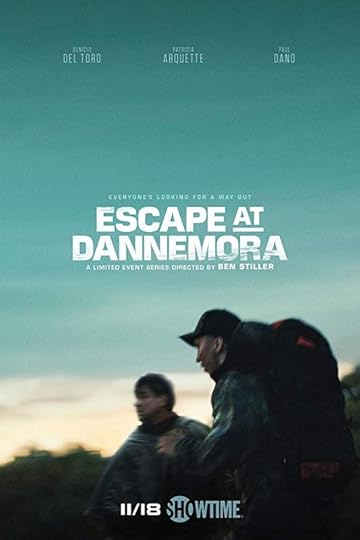
Herewith some thoughts on tonight's powerful Escape at Dannemora finale:
1. Michael Imperioli did a great Andrew Cuomo. Doesn't look all the much like him, but he got the Governor's voice and manner down perfectly.
2. Matt was indeed a pretty good artist. The portraits of George W. Bush and Hillary Clinton that we saw at the end were a lot better than most. (I like Joel Iskowitz's work better - he's done a lot of my book covers, and is doing the cover for my new album, Welcome Up. But if JI wasn't available, I might have asked Matt, if he was still alive and not a murderer.)
3. Matt really slowed Sweat down after the escape. He was at his best, in control and usually comfortably in charge, in prison. He was at his worst outside of prison, in the real world.
4. But even on his own, had Sweat made it to Canada, would he have been home free? The Canadians won't extradite people for whom there might be a death penalty, but there wasn't one awaiting Sweat, so it seems possible, even likely, that they would have extradited him. Of course, they first would have needed to find him. (Especially strong work by Paul Dano as Sweat tonight.)
5. Tilly seems to have an almost unbelievable power over men. Her husband is staying with her, and if that scene near the end, with the new prison guard (or cop) propositioning her is true ... plus the prisoners at Dannemora ... well ...
6. All in all, an unusual and excellent series. I still don't get though, why it's "Escape at" rather than "Escape from"? Is that because they didn't succeed in their escape? Do the results of an escape govern our grammar?
But I enjoyed the mini-series.
See also Escape at Dannemora 1-3: Cold True Crime ... Escape at Dannemora 4: Break Through ... Escape at Dannemora: Out ... Escape at Dannemora 6: Back Stories
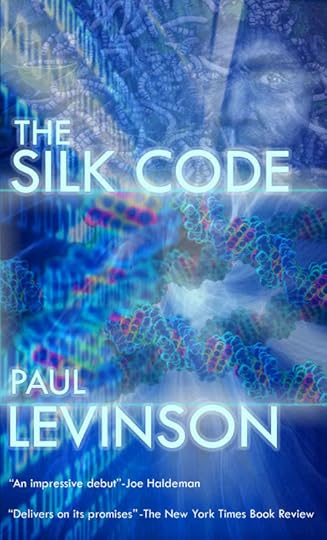 this cover by Joel Iskowitz ... really Paul Levinson's books ... Paul Levinson's music
this cover by Joel Iskowitz ... really Paul Levinson's books ... Paul Levinson's music
Published on December 30, 2018 21:55
Outlander 4.9: Reunions
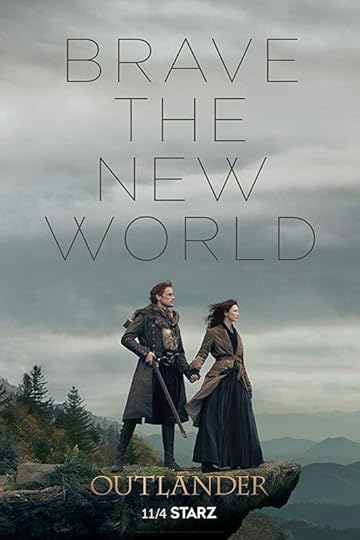
"We haven't had much luck in changing history," Jamie says to Claire in Outlander 4.9, just on tonight. That's not the only thing they haven't had much luck in, in this sterling episode.
And, actually the first part of the episode, most of the episode, was luck galore for our major characters. Jamie meets Brianna for the first time, and Claire is reunited with her daughter. It was hard to keep a dry eye during these scenes.
But, of course, when it comes to Outlander, happiness is usually short-lived. So, before the episode is over, Roger makes his way back to North Carolina, only to be beaten to a pulp by Jamie, who mistakenly thinks Roger raped Brianna, because Lizzie didn't see the whole story. A little knowledge is a dangerous thing.
One important bit of information we learned tonight is that Roger practiced the "withdrawal" method with Brianna, meaning Bonnet the rapist is the more likely father. Of course, the withdrawal method is far from perfect, so Roger still could be the father. If Brianna has the baby - which, notwithstanding the talk about abortion in coming attractions, I'm guessing she will - it would take DNA testing in our current age to know for sure. Or, it's possible that Bonnet knows (for whatever reason) that he can't father a child, so DNA testing might not be necessary (once again, I'll mention that I haven't read the novels).
Excellent acting by everyone tonight, with special kudos to Sophie Skelton as Brianna (and Caitriona Balfe as Claire and Sam Heughan as Jamie are always brilliant). See you here next week in 2019.
See also Outlander 4.1: The American Dream ... Outlander 4.2: Slavery ...Outlander 4.3: The Silver Filling ... Outlander 4.4: Bears and Worse and the Remedy ... Outlander 4.5: Chickens Coming Home to Roost ... Outlander 4.6: Jamie's Son ... Outlander 4.7: Brianna's Journey and Daddy ... Outlander 4.8: Ecstasy and Agony
And see also Outlander Season 3 Debut: A Tale of Two Times and Places ...Outlander 3.2: Whole Lot of Loving, But ... Outlander 3.3: Free and Sad ... Outlander 3.4: Love Me Tender and Dylan ... Outlander 3.5: The 1960s and the Past ... Outlander 3.6: Reunion ... Outlander 3.7: The Other Wife ... Outlander 3.8: Pirates! ... Outlander 3.9: The Seas ...Outlander 3.10: Typhoid Story ... Outlander 3.11: Claire Crusoe ...Outlander 3.12: Geillis and Benjamin Button ... Outlander 3.13: Triple Ending
And see also Outlander 2.1: Split Hour ... Outlander 2.2: The King and the Forest ... Outlander 2.3: Mother and Dr. Dog ... Outlander 2.5: The Unappreciated Paradox ... Outlander 2.6: The Duel and the Offspring ...Outlander 2.7: Further into the Future ... Outlander 2.8: The Conversation ... Outlander 2.9: Flashbacks of the Future ... Outlander 2.10: One True Prediction and Counting ... Outlander 2.11: London Not Falling ... Outlander 2.12: Stubborn Fate and Scotland On and Off Screen ... Outlander Season 2 Finale: Decades
And see also Outlander 1.1-3: The Hope of Time Travel ... Outlander 1.6: Outstanding ... Outlander 1.7: Tender Intertemporal Polygamy ...Outlander 1.8: The Other Side ... Outlander 1.9: Spanking Good ... Outlander 1.10: A Glimmer of Paradox ... Outlander 1.11: Vaccination and Time Travel ... Outlander 1.12: Black Jack's Progeny ...Outlander 1.13: Mother's Day ... Outlander 1.14: All That Jazz ... Outlander Season 1 Finale: Let's Change History
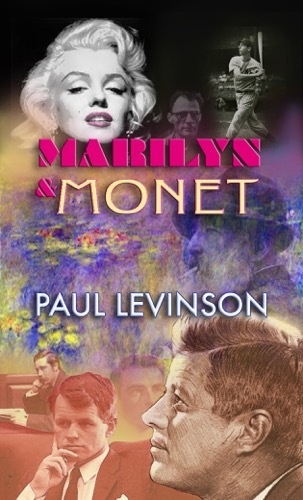
It all started in the hot summer of 1960, when Marilyn Monroe walked off the set of The Misfits and began to hear a haunting song in her head, "Goodbye Norma Jean" ... Paul Levinson's books ... Paul Levinson's music
Published on December 30, 2018 19:46
December 28, 2018
Bad Blood: New Mob
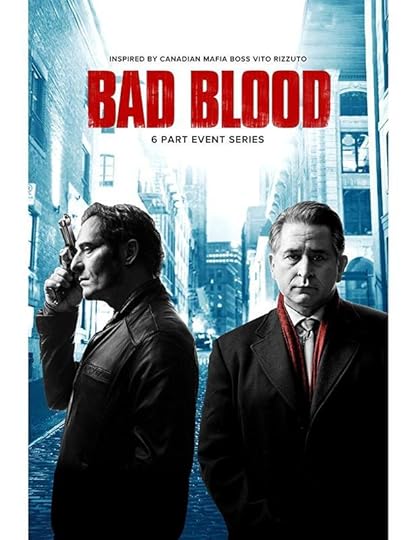
It's hard to do anything new with a gangster story, let alone one about the mob. But Bad Blood, the first season on Netflix (the one my wife and I binged), the second season already on Canadian TV - manages to do just that, with a stellar cast and a surprising story.
First the cast - you can't go wrong with Anthony LaPaglia and Paul Sorvino in a mafia narrative. We knew Kim Coates from Sons of Anarchy. He turned out to be the unpredictable, darkly charismatic, leading character in Bad Blood - someone who can turn from comforting to menacing on a dime.
The story takes in Montreal, a six or so hour drive from where we are near New York City, which plays a role in this story, too. Vito (LaPaglia) runs an outfit under siege north of the border. Sorvino plays his not fully retired father and Coates, not blood, but Declan who is second in command. (Maxim Roy is memorable as Michelle, Vito's longstanding girlfriend. Enrico Colantoni is welcome to see as Bruno the consigliere) The siege they're under comes from the bikers, Irish, and assorted gangs under Vito's umbrella in Montreal, plus a rival mob in New York, plus the US Feds who are out to get Vito on a murder he didn't commit in New York decades ago.
I won't tell you anymore about what happens - I pledged my silence to the mob - except to say that important members of Vito's crew and family start getting killed. Who is behind this is somewhat surprising but completely logical in retrospect. Who actually does get assassinated will totally surprise you.
We've always loved Montreal. Tina's family hails from there (I'm pretty sure they had nothing to do with the mob), and you can't beat the deli (they call it "smoked meat") and bagels (the latter, especially, different from what we have in New York). We'll definitely watch the second season when Netflix picks it up (which it better do).

Paul Levinson's books ... Paul Levinson's music
Published on December 28, 2018 15:42
December 27, 2018
Astounding by Alec Nevala-Lee: Transformative Treasure Trove

One of the joys of reading on a Kindle (or, in my case, a Kindle app) is the ease of bookmarking. As one indication of how important I found Alec Nevala-Lee's Astounding: John W. Campbell, Isaac Asimov, Robert A. Heinlein, L. Ron Hubbard, and the Golden Age of Science Fiction, I bookmarked it ten times more than any other book I've read in the past few years. (The runners-up are The Perversity of Things: Hugo Gernsback on Media, Tinkering, and Scientifiction by Grant Wythoff and Dreaming the Beatles by Rob Sheffield, though I read those two on paper.)
It's no surprise (at least to me) that Astounding had much more of an impact on me - a transformative impact - than The Perversity of Things. I knew neither Gernsback or Campbell in person, or by any means other than their published writing. In contrast, I knew and worked with Isaac Asimov, the high point of which was getting him to write a Preface for my first published book, In Pursuit of Truth: Essays on the Philosophy of Karl Popper in 1982. It was a collection of essays (I contributed one) of which I was the Editor, and I didn't have to work very hard to get Asimov to write the Preface: we already knew each other (I'd sent him my analysis of the Foundation trilogy published a few years earlier in Media and Methods - here's his postcard response - and he quickly accepted Humanity Press's not overly generous offer of $100 to write the Preface for the Popper volume). And, as President of the Science Fiction Writers of America from 1998-2001, and as a science fiction writer myself, I also knew or still know many of the secondary players in Astounding, including Harlan Ellison, Arthur C. Clarke, Hal Clement, Robert Silverberg, Sam Delany (I first heard about him from his mother Ruth, in the mid-1960s, in the George Bruce Branch Library in Harlem where she worked as a librarian and I as a clerk), Ray Bradbury, David Kyle, Barry Malzberg, Greg Benford, Joe Haldeman, and many others. So seeing them in these pages was a tour through many significant conversations and interactions I've had in my own life.
And on being a science fiction writer myself, Nevala-Lee's book also tapped into another profound wellspring of my career: I've been published in Analog 17 times (15 stories and 2 nonfiction articles - one story acquired by Trevor Quachri, all the rest by Stan Schmidt), and am a card-carrying member (well, pin-affixed) of the Analog Mafia. Stan's editing philosophy continued the best of Campbell's. In my case, for example, Stan urged me to not kill off Phil D'Amato (which I had in the first draft of "The Chronology Protection Case"), just as Campbell had urged Frank Herbert not to kill Alia in Dune, one of a plethora of winning details that Nevala-Lee puts in this book. "The Chronology Protection Case" was made into a short movie, now on Amazon Prime, and Phil D'Amato's appearance in my first novel, The Silk Code, won a Locus Award for Best First Novel of 1999.
Ok, so I love Nevala-Lee's book. But what about people without my professional history? I can't say for sure, but I would be bet that any science fiction writer, as well as any science fiction fan, would find this book riveting, and a treasure trove of context-setting scenes. What follows, in rough order of their appearance in the book, are some of the highlights for me:
1. I knew that Paul Krugman was influenced by the Foundation stories, but not Elon Musk. Given the latter's age, I wonder if he was reading Analog in the mid-late 1990s, when my stories first started appearing in its pages.
2. Campbell, as a kid, kept a garter snake in his pocket. I wonder if Stan Schmidt, who had pet snakes, knew about this.
3. I was fascinated to learn that Campbell's favorite professor at MIT was Norbert Wiener. I studied Wiener's Cybernetics when earning my PhD in Media Ecology under Neil Postman at NYU in the late 1970s. Cybernetics also appears later in the book in its extensive discussion of dianetics - the least favorite part, for me, because I never related to Hubbard, dianetics, or Scientology, but it's an important part of the Campbell story.
4. It turns out that Campbell, like Gernsback, was in effect a media ecologist, presaging the kind of thinking that Marshall McLuhan made famous, by observing that unlike radio, television was very possessive, "you have to look at it," and "Man molded the machine, but the machine is going to mold Man". This difference between radio and television played a crucial role in my doctoral dissertation, Human Replay: A Theory of the Evolution of Media, and I often say that radio amply survived the advent of television if for no other reason than you can listen to radio, but can't (safely) watch television, when driving. I'm grateful to Nevala-Lee for alerting me that Campbell made this point back in the 1930s.
5. One thing I do have in common with L. Ron Hubbard: he was elected President of the NY chapter of the American Fiction Guild in 1935. As I already mentioned, I was President of SFWA at the end of the 20th century. That, and later being Chair of the Department of Communication and Media Studies at Fordham University in NYC, convinced me that elected office was no fun, and indeed took too much time away from writing.
6. A lot of the material about Asimov comes from his two-part autobiography, In Memory Yet Green and In Joy Still Felt, which I devoured as soon as they were published (1979, 1980). But it was fun to read it all again - ranging from Asimov getting $64 for his first sale, "Marooned Off Vesta," to Amazing Stories not Astounding (my first sale of a science fiction story to a professional publication was also to Amazing Stories - "Albert's Cradle" in 1993 - and the first payment I ever received for any writing was $65 from The Village Voice for "A Vote for McCartney" in 1971) - to Campbell continually coming up with essential ideas for both the Foundation and the robot stories. (I should also mention that, like Asimov, I have no intention of ever writing under any name other than my own. Except Asimov eventually did, and I won't. I want the girl who didn't laugh at my jokes in 5th grade to see the error of her ways when she walks into a bookstore - or, in today's world, when she's browsing on Amazon.) And it was enlightening to read material about Asimov from other sources that I didn't know.
7. I also studied General Semantics in the NYU Media Ecology PhD program. I still give talks at some of their meetings, and therefore enjoyed Nevalee-Lee's recounting of Heinlein's interest in the subject and movement.
8. I do have something else in common with Hubbard: when a potential recommender invited Hubbard to write the recommendation himself, Hubbard obliged with "This will introduce one of the most brilliant men I have ever known." A reviewer once asked me to write a review of one of my stories, because he was pressed for time. I did, and said it was the best example of this kind of story ever written. I sent it to the reviewer for his approval and he decided to write his own review, after all.
9. It was great reading about Campbell's launching of the Probability Zero section. That was where I had my first publication in Analog, in February 1995.
10. Campbell and Nevala-Lee repeatedly refer to Heinlein as Astounding's (and science fiction's) best writer (until Asimov's The God Themselves in 1972, when Nevala-Lee says Asimov "finally pulled ahead" of Heinlein). I disagree: Asimov was almost always the best science fiction writer, by virtue of his Foundation stories (at least, beginning with "The Mule" in 1945), his robot stories, and The End of Eternity for good measure. But Heinlein was second, with no one even close behind him, until Philip K. Dick (who I learned in Nevala-Lee's book was published in Astounding/Analog only once).
11. I love this quote from S. I. Hayakawa: "The art [of science fiction] consists in concealing from the reader, for novelistic purposes, the distinctions between established scientific facts, almost-established scientific hypotheses, scientific conjectures, and imaginative extrapolations," from ETC, 1951. I was book editor of that journal in the late 1970s.
12. Nevala-Lee provides many examples of Campbell's astute - and not-so-astute - scientific thinking. I'd say that his most accurate was his anticipation of the hydrogen bomb.
13. I hadn't known that Claude Shannon - co-creator of the Shannon-Weaver model of communications, fundamental to any study of the subject - was a neighbor of Campbell in New Jersey!
14. Nevala-Lee should have said more about The Puppet Masters (1951) - one of Heinlein's best novels, one of the best science fiction novels, period, and of which a good movie has yet to be made (unlike Starship Troopers).
15. I don't blame Asimov for long resisting acquiring an agent. I've had mixed results with agents over the years myself.
16. I also loved learning that Campbell sent Heinlein a Tom Lehrer record as a "peace offering" after an argument (they would "never fully reconcile").
17. I'm with Heinlein not Asimov in Heinlein's bristling at editor's instructions and revisions.
18. Heinlein's The Door Into Summer (1956) indeed ranks among his best work - and I'd say among the all-time best time-travel novels - but it comes in second, again, in my opinion, to Asimov's The End of Eternity, published a year earlier. (Nevala does say that it's Asimov's "best single novel". He doesn't say if Heinlein was moved to write his novel after reading Asimov's.)
19. Campbell's rejection of Asimov's "Ugly Little Boy" was one of his worst mistakes - the story is one of Asimov's very best (and, as Nevala-Lee tells us, one of Asimov's favorites).
20. The material about Charles Manson being inspired by Heinlein's Stranger in a Strange Land strikes me as the same as Manson being inspired by the Beatles' Helter Skelter: you can't blame a creator for what a lunatic gets out of the creator's work.
21. Apropos the mention of Marvin Minsky: I should add that he's also on record as saying his work in AI was triggered by Asimov's robot stories.
22. Campbell's racism in the 1960s was indeed repugnant, as Nevala-Lee says, not to mention his critique of the demonstrators at Kent State in 1970. Silverberg was right not to want to work him after the racism became apparent.
23. I was (sadly) not surprised to learn that Mitt Romney said Hubbard's Battleship Earth was his "favorite novel". Back in June 2007, I wondered if Mitt Romney was a cylon.
So there you have it - a sampling of the gems Nevala-Lee's book offers. If you have any interest in science fiction, let alone knowledge of its history and authors, you'll find this book indispensable. And, if you've ever written any science fiction, maybe transformative, too. It had that exhilarating effect on me, because it made clear that what little I've done as a science fiction writer is tied to a genre, a tradition, that propelled us, and lit up our lives, in the 20th century, and still does.
Paul Levinson's books ... Paul Levinson's music
Published on December 27, 2018 15:17
December 26, 2018
Vikings 5.15: The Battle
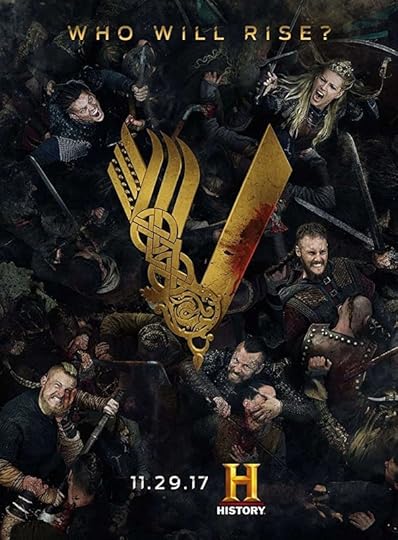
Well, Vikings 5.15 showed not the battle, but one of many crucial battles in this series. All were crucial, but this one was more crucial than most. Because, among the highlights -
Heahmund is killed. My view: that's the price he paid for putting his faith above his love for Lagertha.Speaking of which: Lagertha has gone missing. She saw her beloved Heahmund killed. She can't just go back to Bjorn and live her life, same as before. Maybe she'll end up in Iceland with Floki (we saw no sign of either in this episode). In many ways, that would be best and most logical place for her now.King Harald's back on his way to Kattegat after losing the battle for Wessex. Does that guy ever really win anything? Why anyone would still follow him is a mystery.Ragnar's English son is also on his way to Kattegat. He could make a good ally to Ivar, since they're both, in their own ways, the ultimate outsiders.Alfred now knows the truth about this brother - but not the complete truth, which includes his brother ultimately not going along with the coup. What will Alfred do about him? Tough choice, seeing as how Athelred saved Alfred's life in the battle.So this episode has provided some interesting resolutions and shakeups indeed. One thing I'm not sure about relates to last week's episode, and the beginning of this week's: what impact will the murder of the Seer by Ivar have on the overall story? What impact did he have on any part of the series, except giving advice to people who took him seriously? Who took him seriously in Kattegat before he was killed? Maybe Hvitserk, who suspects/knows what happened - but he and Ivar were at odds before the Seer was killed, anyway,
See you here next week.
See also Vikings 5.1-2: Floki in Iceland ... Vikings 5.3: Laughing Ivar ...Vikings 5.4: Four of More Good Stories ... Vikings 5.5: Meet Lawrence of Arabia ... Vikings 5.6: Meanwhile, Back Home ... Vikings 5.7: A Looming Trojan-War Battle, Vikings Style, and Two Beautiful Stories ...Vikings 5.8: Only Heahmund? ... Vikings 5.9: Rollo ... Vikings 5.10: New and Old Worlds ... Vikings 5.11: Rollo's Son ... Vikings 5.12: "The Beast with Two Backs" ... Vikings 5.13: The Sacrifice ... Vikings 5.14: Fake News in Kattegat
And see also Vikings 4.1: I'll Still Take Paris ... Vikings 4.2: Sacred Texts ...Vikings 4.4: Speaking the Language ... Vikings 4.5: Knives ... Vikings 4.8: Ships Up Cliff ... Vikings 4.10: "God Bless Paris" ... Vikings 4.11: Ragnar's Sons ... Vikings 4.12: Two Expeditions ... Vikings 4.13: Family ... Vikings 4.14: Penultimate Ragnar? ... Vikings 4.15: Close of an Era ... Vikings 1.16: Musselman ... Vikings 1.17: Ivar's Wheels ...Vikings 1.18: The Beginning of Revenge ... Vikings 4.19: On the Verge of History ... Vikings 4.20: Ends and Starts
And see also Vikings 3.1. Fighting and Farming ... Vikings 3.2: Leonard Nimoy ...Vikings 3.3: We'll Always Have Paris ... Vikings 3.4: They Call Me the Wanderer ... Vikings 3.5: Massacre ... Vikings 3.6: Athelstan and Floki ...Vikings 3.7: At the Gates ... Vikings 3.8: Battle for Paris ... Vikings 3.9: The Conquered ... Vikings Season 3 Finale: Normandy
And see also Vikings 2.1-2: Upping the Ante of Conquest ... Vikings 2.4: Wise King ... Vikings 2.5: Caught in the Middle ... Vikings 2.6: The Guardians ...Vikings 2.7: Volatile Mix ... Vikings 2.8: Great Post-Apocalyptic Narrative ... Vikings Season 2 Finale: Satisfying, Surprising, Superb
And see also Vikings ... Vikings 1.2: Lindisfarne ... Vikings 1.3: The Priest ... Vikings 1.4: Twist and Testudo ... Vikings 1.5: Freud and Family ... Vikings 1.7: Religion and Battle ... Vikings 1.8: Sacrifice
... Vikings Season 1 Finale: Below the Ash

historical science fiction - a little further back in time
Paul Levinson's books ... Paul Levinson's music
Published on December 26, 2018 19:26
December 24, 2018
Unforgotten Seasons 1 and 2: Memorable
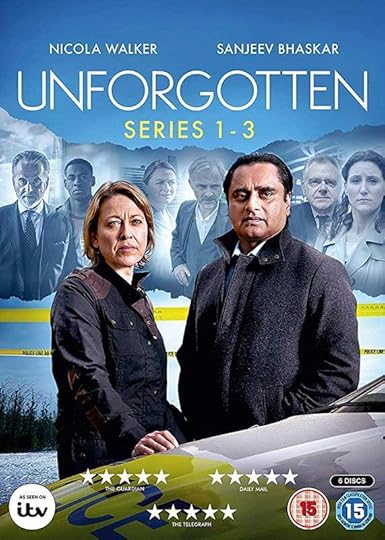
Tina and I just finished binging the first two seasons of Unforgotten on Amazon Prime - via ITV in the UK, where it originated, and PBS in America, earlier this year. The first season was good. The second was superb - a police investigation of a complicated case with even more complex moral terrain that offers ethics at its best as an ending.
The premise of the series is something we've seen a lot of on UK television - cold cases, that is, crimes, usually murders, that are re-opened, usually due to discovery of some human bones in a construction site or some other likely or unlikely place. Indeed, Trevor Eve, who did such a great job in Waking the Dead (2000-2011) as DS Peter Boyd in investigating long dead cases, does a fine job in a very different role the first season of Unforgotten.
The star of both seasons, though, is is Nicola Walker. We first noticed her in MI-5 (Spooks in the UK), where she was a perfect partner for Harry Pearce in more than one way. Walker projects a keen intelligence, deep compassion, and moral intensity in both of her characters. But in Unforgotten, she's in a more-or-less commanding position as DCI Cassie Stuart, or in a position to make her moral choices count. Meanwhile, she lives with her father and teenage son, both of whom have minds of their own.
Sanjeev Bhaskar is her partner, DS Sunny Kahn. Despite his name, he can be a little too serious at times, but that makes his smiles and his own humanity even more appealing. In the second series, Cassie cracks a baffling case - she no doubt read Agatha Christie (I'll say no more) - but the real payoff comes when she, with Sunny's concurrence, decide what to do about it.
Kudos to Chris Lang who wrote this. There's been a third series in the UK that has not yet made it across the Atlantic, and a fourth series green lit. My advice: see them all.
 Paul Levinson's books ... Paul Levinson's music
Paul Levinson's books ... Paul Levinson's music
Published on December 24, 2018 22:21
Dirty John 1.5: John's Family
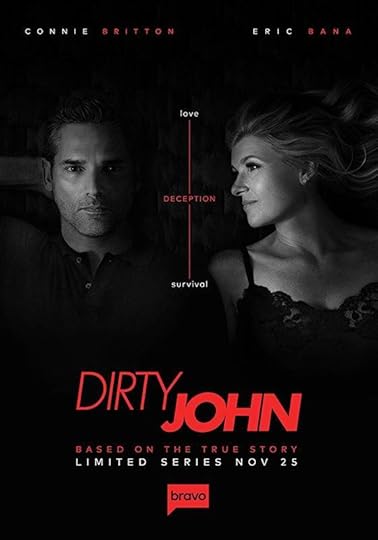
Other than a trenchant scene in which Ronnie (again) tells Debra off about John - which (of course) leads her to get even closer to John - episode 1.5 focuses on John's upbringing, by way of his father, who is as much a sociopath and swindler as John.
First of all, you couldn't ask for a better actor to play John's father than Shea Whigham. Tina and I just saw him in Homecoming, where he was equally effective. And of course he was unforgettable as Nucky's brother Eli in Boardwalk Empire. The thing is, he plays radically different characters in each of these series, and brings home his character with searing, understated style in each of them.
In Dirty John, he's interested in earning money - by doing such things, for example, as getting his son John to eat a little glass in a restaurant, so he can extort some money from the owner. John learns the hard way how he can play on people's vulnerabilities to not just to make money, but improve his position in this world.
Given what his father has done to him - not in terms of his school of hard knocks education, but in terms of the hardness of the knocks - it's not completely surprising that John puts his father out of his misery when he's already in bad shape in the hospital. But this also shows that John has gone beyond his father in depravity - as far as we have seen, his father wasn't a killer. And John has taken his father's advice to go after the families of people who oppose him to the level of threatening his own sister.
Debra doesn't (yet) know about John's murderous propensities, but how on Earth can she start taking him back, in view of what she indeed does already know about him? We got part of the story last week - she inherited her mother's insanely deep well of forgiveness - but there's something else that's deeply not quite right about Debra.
Again, I have no idea how this story turned out in reality, but I'm keenly interested in seeing how it turns out in this bizarre and compelling little series.
See also: Dirty John 1.1: Hunter and Hunted ... Dirty John 1.2: Motives and Plans ... Dirty John 1.4: The Forgiveness Gene

Paul Levinson's books ... Paul Levinson's music
Published on December 24, 2018 15:15
Escape at Dannemora 6: Back Stories

A different kind of Escape at Dannemora last night - #6 - in which we get the back stories of the three principals, Sweat, Matt, and Mitchell.
I liked Sweat's the best. The sequencing was excellent. The scenes of the cop and then his wife could well have been in the present, on the night that Sweat and Matt escaped, which made the scenes especially nail biting. (I don't recall enough of what was actually reported in the news about the escape a few years ago to know if a police officer was involved on the night of the escape.) The earlier year was deliberately not indicated until well into the sequence. And Sweat appearing, after the cop had been shot and run over, and apologizing to him, was the perfect conclusion, and completely consistent with his character.
I liked Matt's the least. In fact, it was physically nauseating. I get that we needed to see how violent, to the point of depravity, Matt had been - an important contrast to the more rational person we've come to know in prison - but, what can I say? As I just pointed out in my review of last night's episode of Ray Donovan, I'm not a fan of excessive violence on the screen.
Mitchell's sequence was quite good. The real Tilly Mitchell has denounced this series as "lies," elaborating that director "Ben Stiller is a son-of-a-bitch liar just like the rest of the world". I have no idea what really happened inside and for that matter outside the prison. I do know that docudramas regularly take lots of license with the actual facts, in the goal of making the production as compelling as possible. So, when I say I like or dislike an aspect of a docudrama, I'm not talking about its fidelity to the truth (unless I happen to know the truth). I'm talking about how impressed or not I am with the narrative on the screen.
So with that as a proviso, I thought the Tilly backstory was quite effective in showing that what Tilly did to her first husband was the same as what she's been doing to Lyle. And I don't blame the real Tilly for being greatly angered by this, especially if she in fact was not like the hateful woman portrayed on the screen, who instructs her little boy to no longer use "Jr" in his name, since she's taking the boy away from his father, and then goes on to lie and say her former husband no longer wanted to be their son's father.
Next week we'll back in the present of the story, with Matt and Sweat in the woods, and Tilly under investigation. And I'll be back here with a final report.
See also Escape at Dannemora 1-3: Cold True Crime ... Escape at Dannemora 4: Break Through ... Escape at Dannemora: Out

Paul Levinson's books ... Paul Levinson's music
Published on December 24, 2018 12:43
Levinson at Large
At present, I'll be automatically porting over blog posts from my main blog, Paul Levinson's Infinite Regress. These consist of literate (I hope) reviews of mostly television, with some reviews of mov
At present, I'll be automatically porting over blog posts from my main blog, Paul Levinson's Infinite Regress. These consist of literate (I hope) reviews of mostly television, with some reviews of movies, books, music, and discussions of politics and world events mixed in. You'll also find links to my Light On Light Through podcast.
...more
- Paul Levinson's profile
- 342 followers



